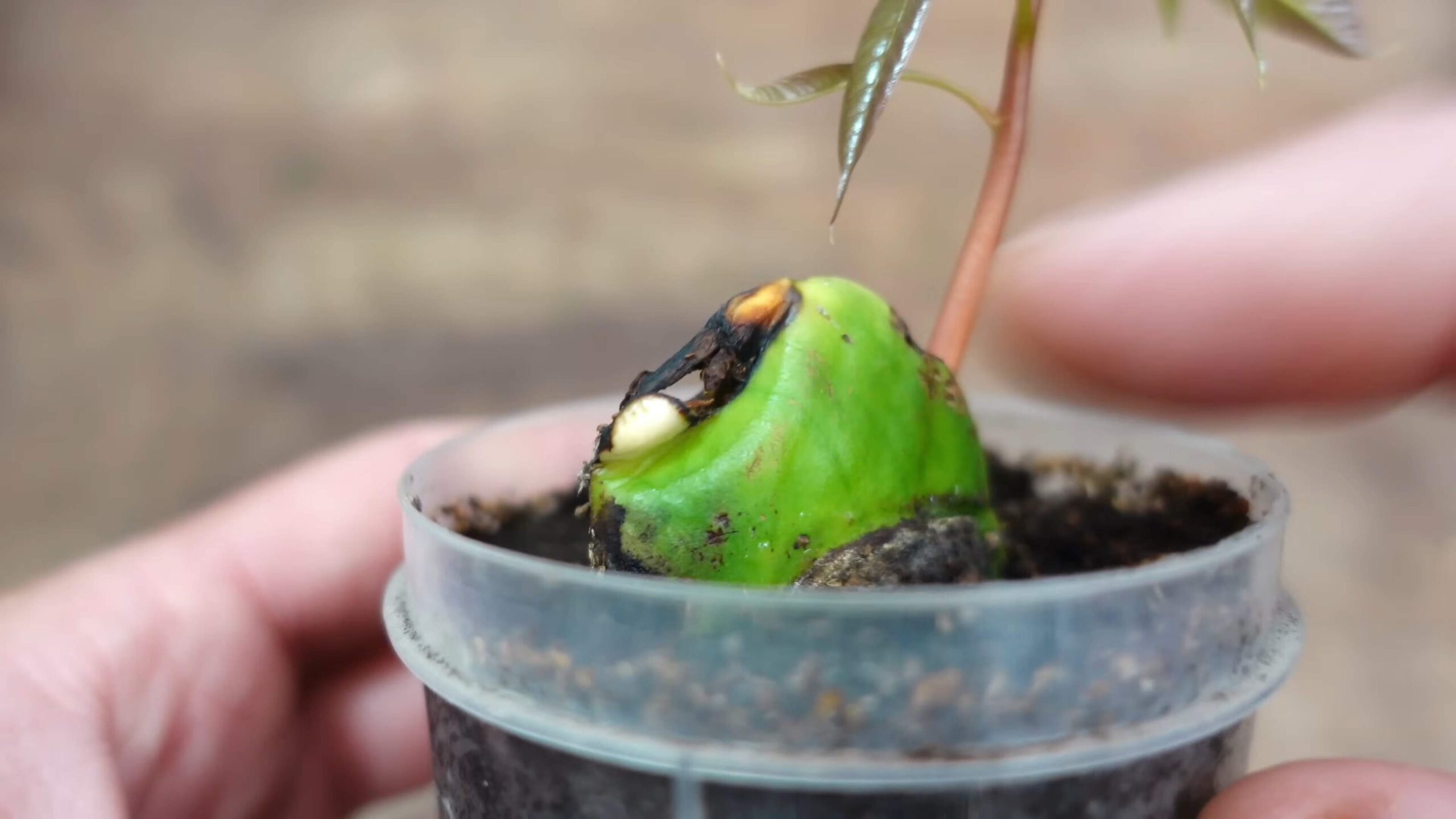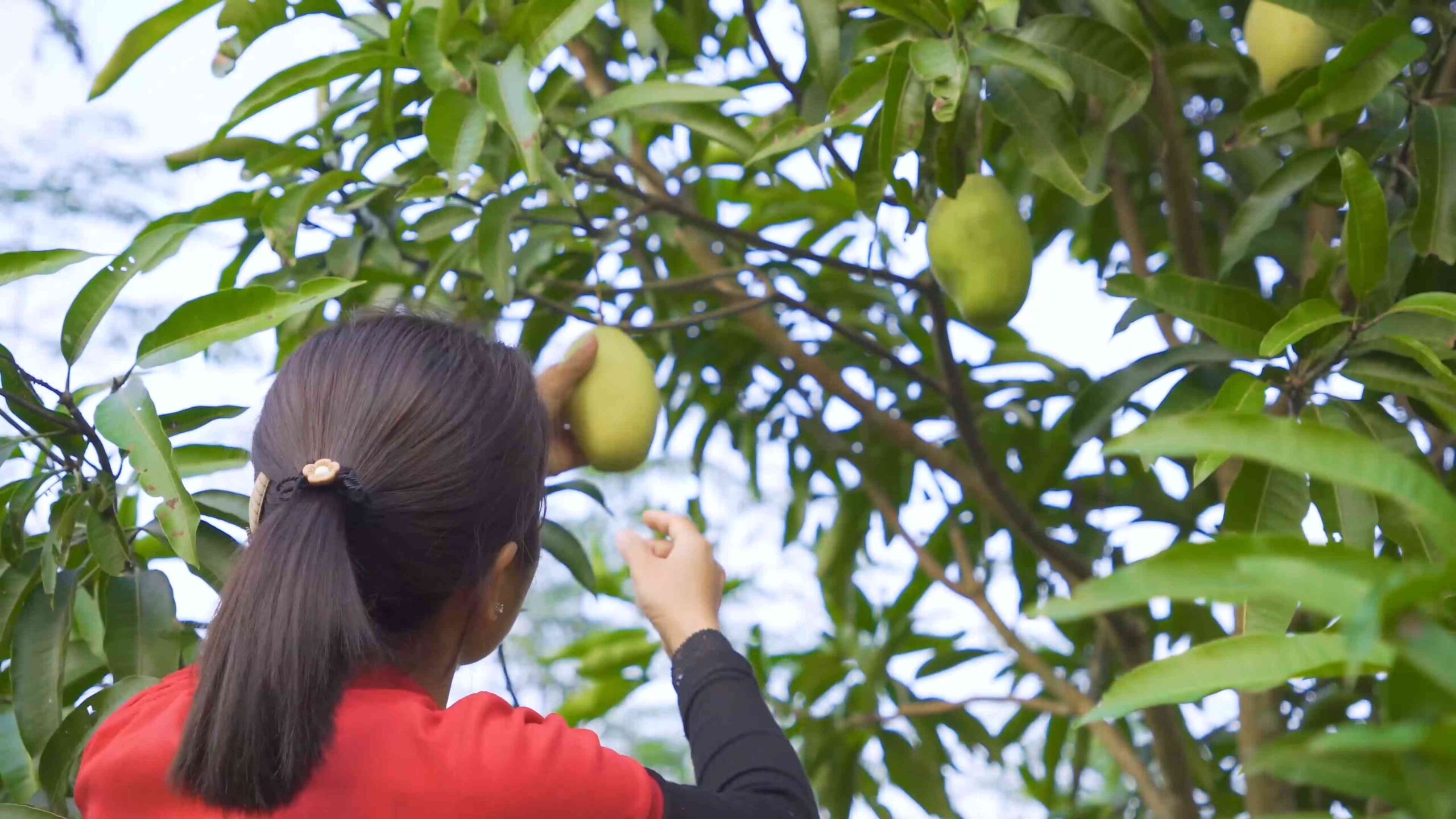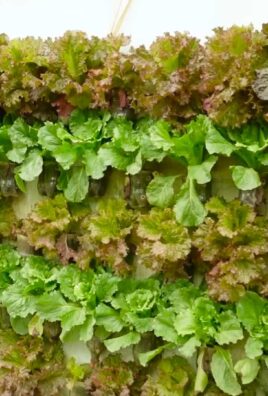Grow Mango Tree from Seed: Imagine biting into a juicy, sun-ripened mango, bursting with tropical flavor, and knowing you grew it yourself! Sounds like a dream, right? Well, it doesn’t have to be! For centuries, mangoes have been cherished in cultures around the world, symbolizing prosperity and good fortune. From their origins in India over 4,000 years ago, mangoes have spread globally, becoming a beloved fruit in countless cuisines.
But what if I told you that you could cultivate your own little piece of the tropics, right in your backyard or even in a pot on your balcony? Many people shy away from the idea of growing their own mango tree, thinking it’s too difficult or requires a tropical climate. However, with the right knowledge and a little patience, you can absolutely grow mango tree from seed. This DIY guide will walk you through the entire process, from selecting the perfect mango to nurturing your seedling into a thriving tree.
Why bother with this DIY project? Because there’s nothing quite like the satisfaction of nurturing a plant from seed to fruit. Plus, you’ll have a constant supply of delicious, homegrown mangoes, free from pesticides and full of flavor. So, grab a mango, and let’s get started on this exciting gardening adventure! I’m excited to share these simple steps with you.

Growing Your Own Mango Tree From Seed: A Tropical Adventure!
Hey there, fellow plant enthusiasts! Ever dreamt of having your own mango tree, laden with juicy, sun-kissed fruit, right in your backyard? Well, guess what? It’s totally achievable, even if you don’t live in the tropics! Growing a mango tree from seed is a rewarding (though patient!) process. It’s a bit of a journey, but trust me, the satisfaction of nurturing a tiny seed into a thriving tree is absolutely worth it. So, grab your gardening gloves, and let’s dive in!
Choosing the Right Mango and Preparing the Seed
Before we get our hands dirty, we need to talk about mangoes! Not all mangoes are created equal when it comes to growing from seed.
* Variety Matters: Some mango varieties are polyembryonic, meaning they produce multiple seedlings from a single seed. These are your best bet! Common polyembryonic varieties include Tommy Atkins, Haden, and Kent. These are more likely to produce a tree true to the parent. Monoembryonic varieties, on the other hand, produce only one seedling, and the resulting tree might not be exactly like the mango you ate.
* Freshness is Key: The fresher the mango, the better the chances of germination. Look for ripe, fragrant mangoes at your local grocery store or farmer’s market.
* Enjoy the Fruit (of course!): This is the best part! Savor the delicious mango flesh. Once you’re done, carefully clean the seed (also called the endocarp) to remove any remaining pulp.
Now, let’s get that seed ready for its new life!
1. Cleaning the Seed: Rinse the mango seed thoroughly under running water. Make sure to remove all traces of the pulp. Leftover pulp can attract unwanted pests and fungi.
2. Drying the Seed: Pat the seed dry with a paper towel. Let it air dry for a day or two in a well-ventilated area. This helps prevent mold growth.
3. Opening the Seed (Carefully!): This is where things get a little tricky. The mango seed is encased in a tough husk. We need to carefully open it to get to the actual seed inside. There are a couple of ways to do this:
* Knife Method: Use a sharp knife (be extremely careful!) to carefully cut along the edge of the husk. You’re aiming to pry it open without damaging the seed inside. Think of it like shucking an oyster. Work slowly and patiently.
* Scissors Method: Some people find it easier to use sturdy scissors or pruning shears to snip along the edge of the husk. Again, be very careful not to cut the seed itself.
* Hammer Method (Use with Caution!): As a last resort, you can gently tap the husk with a hammer to crack it open. Wrap the seed in a towel first to protect it. This method is riskier, as you could easily damage the seed.
4. Extracting the Seed: Once you’ve opened the husk, you’ll find the actual mango seed inside. It looks like a large bean. Carefully remove it from the husk.
5. Inspect the Seed: Check the seed for any signs of damage or rot. It should be plump and healthy-looking. Discard any seeds that are discolored or mushy.
Germinating the Mango Seed
Now for the exciting part – getting that seed to sprout! There are a couple of popular methods for germinating mango seeds:
* Paper Towel Method: This is a simple and effective way to germinate seeds.
* Direct Planting Method: Planting the seed directly into soil.
Let’s explore both:
Paper Towel Germination Method
1. Wrap in Damp Paper Towel: Moisten a paper towel and wring out any excess water. Wrap the mango seed in the damp paper towel.
2. Seal in a Plastic Bag: Place the wrapped seed in a resealable plastic bag. This will help retain moisture.
3. Warm Location: Place the bag in a warm location, such as on top of your refrigerator or near a sunny window (but not in direct sunlight). The ideal temperature for germination is around 70-80°F (21-27°C).
4. Check Regularly: Check the seed every few days to make sure the paper towel is still moist. If it’s drying out, lightly mist it with water.
5. Wait Patiently: Germination can take anywhere from one to three weeks, or even longer. Be patient! You should see a root emerging from the seed.
Direct Planting Germination Method
1. Prepare Your Pot: Choose a pot that is at least 6 inches in diameter and has drainage holes. Fill the pot with a well-draining potting mix. A mix of potting soil, perlite, and vermiculite works well.
2. Plant the Seed: Make a hole in the center of the potting mix that is about 1-2 inches deep. Place the mango seed in the hole with the pointed end facing up (where the root will emerge). Cover the seed with potting mix and gently pat it down.
3. Water Thoroughly: Water the potting mix thoroughly until water drains out of the drainage holes.
4. Warm and Sunny Location: Place the pot in a warm and sunny location. Mangoes love sunlight!
5. Keep the Soil Moist: Keep the soil consistently moist, but not waterlogged. Check the soil moisture regularly and water when the top inch of soil feels dry.
6. Wait Patiently: Germination can take several weeks, so be patient. You should see a sprout emerging from the soil.
Planting Your Mango Seedling
Once your mango seed has germinated and has a healthy root system (if you used the paper towel method) or has sprouted and has a few leaves (if you used the direct planting method), it’s time to plant it in a larger pot.
1. Choose a Larger Pot: Select a pot that is at least 10-12 inches in diameter. This will give the seedling plenty of room to grow.
2. Prepare the Potting Mix: Use a well-draining potting mix, similar to what you used for germination. You can also add some compost to the mix for extra nutrients.
3. Carefully Transplant the Seedling: Gently remove the seedling from its current container. Be careful not to damage the roots. If you germinated in a paper towel, carefully plant the sprouted seed in the pot, making sure the roots are spread out.
4. Planting Depth: Plant the seedling at the same depth it was growing in its previous container.
5. Water Thoroughly: Water the potting mix thoroughly until water drains out of the drainage holes.
6. Sunny Location: Place the pot in a sunny location. Mangoes need at least 6-8 hours of sunlight per day.
Caring for Your Mango Tree
Now that your mango tree is planted, it’s important to provide it with the proper care to ensure it thrives.
* Watering: Water your mango tree regularly, especially during the growing season (spring and summer). Allow the soil to dry out slightly between waterings. Avoid overwatering, as this can lead to root rot.
* Fertilizing: Fertilize your mango tree every few months with a balanced fertilizer. Follow the instructions on the fertilizer package.
* Pruning: Prune your mango tree regularly to maintain its shape and encourage fruit production. Remove any dead or diseased branches.
* Pest and Disease Control: Keep an eye out for pests and diseases. Common mango pests include aphids, scale, and mealybugs. Treat any infestations promptly with an appropriate insecticide or fungicide.
* Sunlight: Mango trees need plenty of sunlight. Make sure your tree is getting at least 6-8 hours of sunlight per day.
* Temperature: Mango trees are tropical plants and prefer warm temperatures. Protect your tree from frost and freezing temperatures. If you live in a cold climate, you may need to bring your tree indoors during the winter.
Patience is a Virtue!
Growing a mango tree from seed takes time and patience. It can take several years for a mango tree grown from seed to produce fruit. Don’t get discouraged if you don’t see fruit right away. Just keep providing your tree with the proper care, and eventually, you’ll be rewarded with delicious, homegrown mangoes!
Important Note: Mango trees grown from seed may not produce fruit that is exactly like the parent mango. This is because mangoes are often hybrids. However, you’ll still get to enjoy the satisfaction of growing your own tree and harvesting your own fruit!
So, there you have it! Everything you need to know to grow your own mango tree from seed. It’s a fun and rewarding project that will bring a touch of the tropics to your home. Happy gardening!

Conclusion
So, there you have it! Growing a mango tree from seed isn’t just a fun project; it’s a rewarding journey that connects you to the natural world and allows you to cultivate your own delicious fruit. While it requires patience and a little bit of effort, the satisfaction of nurturing a tiny seed into a thriving tree is unparalleled. Forget the expensive nursery saplings – this DIY trick empowers you to create your own mango oasis, tailored to your specific climate and preferences.
Why is this a must-try? Because it’s more than just growing a plant; it’s about understanding the life cycle, learning about botany, and experiencing the magic of transformation firsthand. Plus, you’ll have a unique story to tell – “I grew this mango tree from a seed!” – a conversation starter that’s sure to impress.
Think about the possibilities! You can experiment with different mango varieties, each offering a unique flavor profile. Try growing several seeds at once to increase your chances of success and potentially create your own mini-mango orchard. Consider grafting your seedling onto a more established rootstock for faster fruiting and improved disease resistance. The options are endless!
Don’t be afraid to get your hands dirty and embrace the learning process. Even if you encounter challenges along the way, remember that every mistake is an opportunity to learn and improve. The key is to be patient, observant, and persistent.
We highly encourage you to embark on this exciting adventure of growing a mango tree from seed. It’s a fantastic way to connect with nature, learn new skills, and ultimately, enjoy the fruits (literally!) of your labor. And most importantly, share your experience with us! We’d love to hear about your successes, challenges, and any tips or tricks you discover along the way. Post pictures of your seedlings, share your growing techniques, and let’s create a community of mango enthusiasts! Let us know what variety of mango you chose to grow and how the DIY trick worked for you. Together, we can unlock the secrets to successful mango cultivation and spread the joy of homegrown fruit. This DIY trick is a game changer for anyone looking to add a tropical touch to their garden.
Now, let’s address some frequently asked questions to ensure your mango-growing journey is a smooth and fruitful one.
Frequently Asked Questions
How long does it take for a mango seed to germinate?
Germination time can vary depending on several factors, including the mango variety, the freshness of the seed, and the environmental conditions. Generally, you can expect to see signs of germination within 1 to 4 weeks. However, some seeds may take longer, so don’t give up too soon! Ensure the seed is kept consistently moist and warm to encourage germination. Providing bottom heat can also speed up the process. Remember, patience is key!
What type of soil is best for growing mango trees?
Mango trees thrive in well-draining soil that is rich in organic matter. A slightly acidic soil pH (around 6.0 to 6.5) is ideal. You can improve the soil’s drainage by adding perlite or coarse sand. Incorporating compost or well-rotted manure will enrich the soil and provide essential nutrients. Avoid heavy clay soils, as they can retain too much water and lead to root rot. A good potting mix specifically formulated for fruit trees is also a great option, especially when starting your mango tree in a container.
How often should I water my mango seedling?
Water your mango seedling regularly, especially during the first few months after germination. Keep the soil consistently moist, but avoid overwatering, which can lead to root rot. Check the soil moisture by sticking your finger about an inch deep. If the soil feels dry, it’s time to water. During the warmer months, you may need to water more frequently. As the tree matures, you can gradually reduce the watering frequency, allowing the soil to dry out slightly between waterings.
How much sunlight does a mango tree need?
Mango trees are sun-loving plants and require at least 6 to 8 hours of direct sunlight per day to thrive. Choose a location that receives plenty of sunlight throughout the day. If you’re growing your mango tree indoors, place it near a sunny window or supplement with grow lights. Insufficient sunlight can lead to stunted growth and reduced fruit production.
When will my mango tree start producing fruit?
Mango trees grown from seed typically take longer to produce fruit compared to grafted trees. You can expect to wait anywhere from 5 to 8 years before your seedling starts bearing fruit. Grafting can significantly reduce this waiting period, as it combines the desirable traits of a mature, fruit-bearing tree with the vigorous rootstock of a seedling. While waiting, ensure your tree receives proper care, including regular fertilization and pruning, to promote healthy growth and eventual fruit production.
What kind of fertilizer should I use for my mango tree?
Use a balanced fertilizer specifically formulated for fruit trees. Look for a fertilizer with an NPK ratio (nitrogen, phosphorus, potassium) that is appropriate for the tree’s age and stage of growth. Young seedlings benefit from a fertilizer with a higher nitrogen content to promote leafy growth. Mature trees require a fertilizer with a higher phosphorus and potassium content to support flowering and fruit production. Follow the instructions on the fertilizer packaging carefully to avoid over-fertilizing, which can damage the tree.
How do I protect my mango tree from pests and diseases?
Regularly inspect your mango tree for signs of pests or diseases. Common pests include aphids, scale, and mealybugs. Diseases can include fungal infections like anthracnose. Treat any infestations or infections promptly with appropriate insecticides or fungicides. You can also use organic pest control methods, such as neem oil or insecticidal soap. Proper sanitation, such as removing fallen leaves and debris, can help prevent the spread of diseases.
Can I grow a mango tree in a container?
Yes, you can grow a mango tree in a container, especially if you live in a climate with cold winters. Choose a large container with drainage holes and use a well-draining potting mix. Dwarf mango varieties are particularly well-suited for container growing. Be sure to provide adequate sunlight and water, and fertilize regularly. You may need to repot your mango tree as it grows larger.
What are some common problems when growing mango trees from seed?
Some common problems include failure to germinate, slow growth, susceptibility to pests and diseases, and a long waiting period before fruiting. To increase your chances of success, use fresh seeds, provide optimal growing conditions, and protect your tree from pests and diseases. Grafting can also help overcome some of these challenges.
How do I know when a mango is ripe?
The color of a mango is not always a reliable indicator of ripeness, as it varies depending on the variety. Instead, gently squeeze the mango. A ripe mango will yield slightly to pressure. You can also smell the stem end of the mango. A ripe mango will have a sweet, fruity aroma.





Leave a Comment